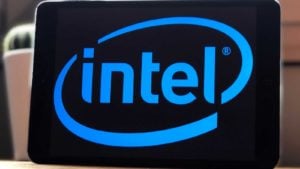An interesting chart has been circling on Twitter (NYSE:TWTR) which uses historical data to make the case for buying value stocks over the next decade.
The chart plots the relative performance of stocks with a low price-to-earnings multiple (aka, value stocks), versus stocks with high price-to-earnings multiple (aka, growth stocks), on a 10-year annualized basis. It finds that, over the past decade, value stocks have under-performed growth stocks by an average of 2.9% per year — the biggest under-performance on record — with data dating back to 1960.
The last time this number got so low was the peak of the Dot Com Bubble. At that point in time, value stocks had under-performed growth stocks by about 2.7% per year over the preceding decade. Over the following decade, value stocks out-performed growth stocks by more than 10% per year.
The rationale is that growth stocks don’t outperform value stocks forever, nor do value stocks outperform growth stocks forever. Right now, the divergence in performance between the two is as wide as it has ever been. History says a snap-back is due. If we get that snap-back, then value stocks are due for big returns over the next decade.
Will things actually play out like that?
Maybe. Maybe not. There are a lot of differences between now and 2000, including that valuations today are more tangible and interest rates are much lower. So long as that remains the case, growth stocks should continue to out-perform.
That doesn’t mean we can’t get a snap-back rally in value stocks in 2020. Indeed, we may get just that, as investors get tired of chasing winners and start buying into losers as the global economic environment improves.
With that in mind, let’s take a look at seven value stocks to consider buying for 2020.
AT&T (T)

Forward P/E multiple: 9.98
One value stock which outperformed in 2019 and should continue to outperform in 2020 is AT&T (NYSE:T).
In 2019, shares of the telecommunications giant had their best year since 2006, rising 37% in anticipation of big 5G and streaming TV catalysts in 2020. Despite that run higher, AT&T stock is still very cheap at just about 10-times forward earnings, and the forthcoming 5G and streaming TV catalysts look as good as ever.
That is, AT&T’s mobile business will get a big boost this year as consumers upgrade in bulk to 5G smartphone and 5G wireless coverage plans. This mass upgrade cycle will push the company’s wireless revenues and profits higher. At the same time, cord-cutting losses will start to be offset by streaming subscriber growth through the company’s new HBO Max streaming service.
These favorable dynamics, on top of what’s still a cheap valuation, should keep the rally in AT&T stock alive for the next twelve months.
Bed Bath & Beyond (BBBY)

Forward P/E multiple: 10.13
The value stock on this list with the most potential upside is Bed Bath & Beyond (NASDAQ:BBBY).
The struggling department store operator has a new chief executive — Mark Tritton — and he’s a top quality executive. He comes from Target (NYSE:TGT), where he was instrumental in taking what was a struggling physical retail business in the mid-2010s, and turning it into an omni-channel retail powerhouse by 2019.
The bull thesis on Bed Bath & Beyond stock rests on the idea that Tritton can execute a similar turnaround at Bed Bath & Beyond. And that is totally doable. Through better sourcing, cost-cutting, real estate optimization, an expanded digital presence, and built-out omni-channel capabilities, Bed Bath & Beyond could easily stabilize its sales base and improve margins.
If so, then profits will move higher. So will the stock’s forward earnings multiple, which today sits at just 10.13 (and that’s dirt cheap for a retailer). Profit growth plus multiple expansion equals a higher price tag for Bed Bath & Beyond stock.
Intel (INTC)

Forward P/E multiple: 13.1
Despite being exposed to multiple hyper-growth industries, semiconductor giant Intel (NASDAQ:INTC) is still a value stock that trades at just 13.1-times forward earnings.
This combination of big growth exposure and dirt cheap valuation is what makes Intel stock so attractive.
Over the next several years, Intel’s revenues and profits will continue to push higher, supported by rising demand for central processing units (CPUs) from end-markets like data-centers, autonomous driving, artificial intelligence, machine learning, the Internet-of-Things, so on and so forth. Sure, there’s a lot of competition in these markets. But Intel is the 400-pound gorilla, and its unrivaled size will enable the company to remain relevant in all of these growth markets for several years to come.
At the same time, the stock only trades at 13.1-times forward earnings. Valuation friction is not an issue here. If anything, there’s actually a lot of potential upside through multiple expansion as Intel increasingly turns into a growth company thanks to its data and AI tailwinds.
Big growth and a cheap valuation lay the groundwork for Intel stock to out-perform for the foreseeable future.
International Business Machines (IBM)

Forward P/E multiple: 10.77
When it comes to legacy technology giant International Business Machines (NYSE:IBM), the bull thesis is all about the company’s newly acquired asset, Red Hat, re-accelerating the company’s growth trajectory in 2020.
IBM has struggled over the past several years to stay relevant in a dynamic enterprise technology landscape. Their pivot to cloud has yielded mixed results, and ultimately, revenues haven’t gone anywhere in a really long time. But in 2019, IBM acquired hybrid cloud player Red Hat, who — much unlike IBM — has had tremendous success in the cloud world and has seen its revenues roar higher over the past few years.
To be sure, Red Hat is tiny compared to IBM. But as IBM more fully integrates Red Hat into its financials in 2020 and leverages cross-selling opportunities and cost synergies, the company’s cloud business should gain momentum.
This is already happening. In late January, IBM reported fourth quarter numbers that included 3% adjusted revenue growth. That may not seem like much, but for a company that has been posting negative revenue growth since 2013, it’s a landmark accomplishment. IBM stock surged in response.
Throughout the rest of the year, IBM will continue to report impressive revenue growth thanks to Red Hat, and IBM stock — which remains dirt cheap — will keep moving higher.
Ford (F)

Forward P/E multiple: 6.46
While electric vehicle giant Tesla (NASDAQ:TSLA) has surged to all-time highs, traditional U.S. auto giant Ford (NYSE:F) has sunk to decade lows. That’s because the former is aligned with rising electric vehicle demand, and is consequently growing its reach across the global auto landscape. Meanwhile, the latter is aligned with falling traditional auto demand, and is consequently seeing its revenues and profits fall.
But things about to change for Ford. Over the next five years, Ford is going to become more like Tesla and align itself more closely with the electrification trend. Ford is going to launch several new fully electric and hybrid vehicles, the sum of which will give Ford much broader exposure to rising EV demand tailwinds.
Of particular interest, Ford will launch the Mustang Mach-E (which the company advertised for during the Super Bowl) in 2021. That car projects to have particularly high demand given the strong branding behind Mustangs.
As Ford gains broader exposure to the EV market, demand trends will improve, revenues will run higher, margins will expand, and profits will get back to growing. At just 6.46-times forward earnings, Ford stock isn’t priced for re-accelerated growth. Thus, as growth does pick up over the next few years, Ford stock should drive higher.
Best Buy (BBY)

Forward P/E multiple: 14
For the past several years, Best Buy (NYSE:BBY) stock has been one of the cheapest — and often times, the cheapest — high-quality retailers on the market. Not surprisingly, over the past five years, Best Buy stock has coincidentally rallied more than 130%, while the SPDR S&P Retail ETF (NYSEARCA:XRT) has dropped about 10%.
This out-performance in Best Buy stock will persist for two reasons. First, Best Buy stock remains dirt cheap. Shares trade at 14-times forward earnings. Sure, that’s above the stock’s five-year-average forward earnings multiple. But it’s well below the market average multiple (18.5) and the consumer discretionary sector average multiple (22.1). Plus, Best Buy stock has a 2.26% dividend yield, which is also above the market’s yield of 1.7%. For all intents and purposes, Best Buy stock remains cheap.
Second, Best Buy continues to fire off strong quarterly numbers. Comparable sales growth at the retailer has been consistently positive for the past several years. Over the past several quarters, it has been consistently north of 1%. Margins are expanding. Profits are running higher.
All of these trends should persist, because more consumer products are becoming consumer tech products, implying that consumers will continue to do more shopping at Best Buy. Steady growth coupled with a discounted valuation should keep Best Buy stock on a solid uptrend.
CVS (CVS)

Forward P/E multiple: 10.22
A significant and impressive pharmacy retail turnaround — which started in 2019 — will continue in 2020 and keep the recent rally in CVS (NASDAQ:CVS) stock alive for the foreseeable future.
The pharmacy retail world became commoditized in the 2010s. Outside of proximity, it became tough to tell CVS, Walgreens (NASDAQ:WBA), Rite Aid (NYSE:RAD), and others apart. In the absence of product or platform differentiation, the drug retail world relied on price differentiation to drive growth. That meant price cuts, lower revenue per item, lower margins, and lower profits.
That’s exactly what happened at CVS. And lower profits is exactly why CVS stock stumbled from 2015 to 2018.
In 2019, CVS management figured out a way to differentiate their retail operations like HealthHUBs, or stores that include personalized, in-store health care services like nutrition counseling and blood pressure screenings. The thinking was that HealthHUBs would help CVS stores turn into one-stop-shops, and given how much consumers have gravitated towards one-stop-shops like Walmart (NYSE:WMT) and Target (NYSE:TGT) over the past few years, this transformation should reinvigorate traffic growth trends.
Management was right. As CVS has opened up more HealthHUBs, traffic, revenue, and profit trends have improved. CVS stock has rallied.
CVS will continue to open up more HealthHUBs in 2020. As they do, all of these favorable dynamics will persist, including the big rally in CVS stock.
Bank of America (BAC)

Forward P/E multiple: 10.48
The bull thesis on Bank of America (NYSE:BAC) stock for 2020 goes something like this: buy bank stocks this year because the U.S. economy is improving.
Specifically, outside of low rates, all other economic conditions in the U.S. are favorable and should improve throughout 2020. The U.S.-China trade war is deescalating. This deescalation is accelerating amid the coronavirus outbreak, as China has halved tariffs on U.S. goods and appears significantly more willing to get started with phase two of a trade deal in order to support its own economy.
At the same time, the U.S. Federal Reserve continues to pour liquidity into the market via asset purchases, and is supporting expansion by keeping rates low. Indeed, over the past four quarters, the U.S. Fed has injected more fiscal stimulus into the U.S. economy that at any stretch since the late 2000s Financial Crisis.
Meanwhile, the U.S. jobs market remains robust, with record-low unemployment rates, huge job growth, and steady wage gains. Manufacturing activity in the U.S. is picking back up, too. As are corporate capital expenditure levels.
Big picture: the U.S. economy is in rebound mode after a shaky 2018 and 2019. As goes the U.S. economy, so go U.S. banks. Bank of America stock, at just 10.48-times forward earnings and with strong operating results, is one of the more attractive U.S. bank stocks to buy for this economic rebound.
As of this writing, Luke Lango was long BBBY and CVS.
